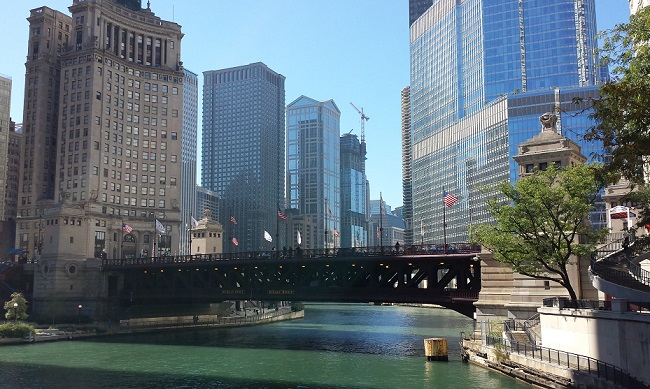Return of the Queen of All Horticultural Media
Melinda Myers is getting to be a regular fixture around here.
![]() She joined Peggy and me on this program in March, just before her appearance at the Chicago Flower & Garden Show. She was also with us in August of 2017, just after having been inducted into the Hall of Fame for the GWA: The Association for Garden Communicators.
She joined Peggy and me on this program in March, just before her appearance at the Chicago Flower & Garden Show. She was also with us in August of 2017, just after having been inducted into the Hall of Fame for the GWA: The Association for Garden Communicators.
Among her accomplishments, she hosts the nationally-syndicated Melinda’s Garden Moment program, airing on more than 120 TV and radio stations throughout the United States. Myers also hosts the internationally distributed Great Courses “How to Grow Anything” DVD series, including the latest Food Gardening for Everyone DVD set.
She’s a longtime columnist and contributing editor for Birds & Blooms magazine and writes the twice monthly “Gardeners’ Questions” newspaper column. Myers writes a regular column for Chicagoland Gardening and Wisconsin Gardening magazines, and she has written more than 20 gardening books, including Can’t Miss Small Space Gardening and the Midwest Gardener’s Handbook.
So what will we talk about this morning? Pretty much any and everything related to gardening, I imagine. Or maybe we’ll just let her warm up for her July 7 talk at Pasquesi Home and Gardens at 975 North Shore Drive in Lake Bluff.
The name of her presentation is Low Maintenance Perennials for a Beautiful Landscape and she will be speaking from 11 a.m. – 12 p.m., with a Q&A session from 12 p.m. to 1 p.m. The seminar is free and open to the public. No registration is required.
Depending on time constraints this morning, we might also get into topics like natural lawn care, Hugelkultur, lasagna gardening, and who knows what else.
The Chicago River seems to have been in the news a lot lately.
As reported on The Mike Nowak Show on Earth Day 2018, a coalition of groups and businesses unveiled a plan to remake the North Branch Industrial Corridor, opening for the first time a section of the Chicago River that has been at the mercy of heavy industry for decades. The area, now called the North Branch Park & Nature Preserve would feature a 24-acre park on the banks of the river.
However, there is some concern at the moment about the lack of meaningful dialogue concerning how that section of the City will be developed. Don’t be surprised if Da Mayor makes a pronouncement about how he expects things to go, followed by wailing and gnashing of teeth from concerned citizens over the lack of transparency in the decision making process. Isn’t that how everything usually works in Chicago?
But let’s get back to the river.
 On May 6, Peggy and I welcomed John Quail, Director of Watershed Planning for Friends of the Chicago River to the WCGO studios to talk about a raft of issues, including the resurgence of wildlife along what was once pretty much an open sewer.
On May 6, Peggy and I welcomed John Quail, Director of Watershed Planning for Friends of the Chicago River to the WCGO studios to talk about a raft of issues, including the resurgence of wildlife along what was once pretty much an open sewer.
If somebody asked you how many fish species can be found in the Chicago River right now, you might be surprised to know that in 2016 the count was 76. But that’s not the interesting part. What’s interesting is that the number of species in the 1970s was 10. Which is actually pretty scary. But a lot of things have changed in what is known as the Chicago Area Waterway System (CAWS) since then that have led to the increase in the fish population, according the Metropolitan Water Reclamation District of Greater Chicago (MWRDGC):
TARP, also known as “Deep Tunnel,” provides additional capacity to store combined sewage and stormwater that would otherwise discharge into local waterways. By 2029, TARP tunnels and completed reservoirs will have the capacity to hold 20.55 billion gallons of water. In addition, the MWRD has developed in-stream and side-stream aeration systems that have also provided much needed oxygen to aid in water quality improvements. As part of this innovation, the MWRD installed Sidestream Elevated Pool Aeration (SEPA) stations located along the Calumet-Sag Channel and the Calumet River. The five stations serve as scenic public recreation spaces and also improve the water quality and create new life in the CAWS. These waterfalls pump up to 1.3 billion gallons of water per day and add up to 25 tons of oxygen to the waterways each day.
Water quality took a giant step forward when, in the summer of 2015, the Illinois Pollution Control Board (IPCB) accepted updated water quality standards for the Chicago River, guaranteeing a healthy water environment for people, plants, and animals. In 2016, disinfection technology at the O’Brien and Calumet Water Reclamation Plants began eliminating harmful bacteria from river effluent.
The battle to improve the Chicago River has been a painfully slow and difficult process, which makes it all the more frustrating when businesses on the river choose not to be good neighbors. And, in the latest case, that bad neighbor turns out to be the President of the United States. On Monday, June 18, the Sierra Club issued a press release that starts:
Today, the Illinois Chapter of the Sierra Club and Friends of the Chicago River provided notice of their intent to sue the Chicago Trump International Hotel and Tower over its continuing violation of the Clean Water Act. It appears that Trump Tower in Chicago has not fulfilled several legal requirements of the Clean Water Act over the past four years.
These violations include Trump Tower’s ongoing illegal operation of a cooling water intake structure that siphons water from the Chicago River and likely traps and kills fish and other wildlife in this increasingly ecologically and recreationally vibrant waterway. Federal and state law and regulations require newly constructed facilities like the Trump Tower to study how to minimize damage to aquatic life from their water intake structures and to implement protective measures.
Nice guy, that president.
The Chicago Tribune adds,
Yet of the nearly dozen high-rises that rely on the Chicago River for cooling water, the decade-old skyscraper developed by Donald Trump is the only one that has failed to document it took those measures, state records show. Trump’s Chicago managers also haven’t conducted a study of fish killed by the luxury hotel and condominium complex — another step required five years ago by the Illinois Environmental Protection Agency in a permit for the building’s water intakes.
Estimates of Trump Tower fish kills likely won’t be available anytime soon. A draft of the state’s latest permit gives building managers another three years to complete the ecological study and confirms state inspectors failed to ensure the skyscraper has complied with the fish-protecting regulations.
“I can’t keep a library book checked out for more than two weeks without getting a fine,” said Albert Ettinger, an environmental lawyer challenging the permit on behalf of the Illinois chapter of the Sierra Club and Friends of the Chicago River. “Why should Trump Tower get special treatment?”
Because the guy who owns it thinks he’s above the law? Because he’s already in the process of dismantling our nation’s environmental protections? Because he simply doesn’t give a rip? Stop me if I’m getting warm.
The aforementioned Albert Ettinger has been litigating environmental lawsuits for more than three decades, part of that time as Senior Staff Attorney at the Environmental Law & Policy Center of the Midwest. He and Cindy Skrukrud, Clean Water Program Director for the Illinois Chapter of the Sierra Club, join us on the show today to talk about the threat to wildlife in the Chicago River from Trump Tower.

